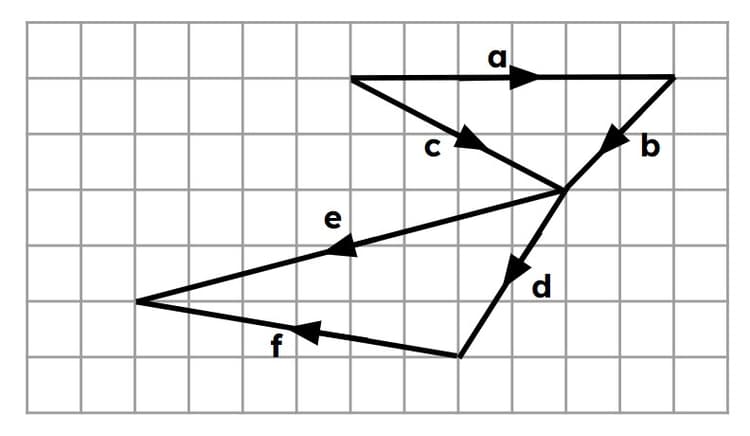Myths about teaching can hold you back


- Year 11•
- Higher
Fluency in arithmetic procedures with algebraic vector notation
I can carry out arithmetic procedures on vectors written algebraically.


- Year 11•
- Higher
Fluency in arithmetic procedures with algebraic vector notation
I can carry out arithmetic procedures on vectors written algebraically.
These resources were made for remote use during the pandemic, not classroom teaching.
Switch to our new teaching resources now - designed by teachers and leading subject experts, and tested in classrooms.
Lesson details
Key learning points
- Priority of operations still apply.
- Like terms can be collected.
- The vectors can be sketched and the resultant shown.
Keywords
Resultant vector - A resultant vector is the single vector that produces the same effect as a combination of other vectors.
Common misconception
When using operations with vectors, pupils do not use the priority of operations.
The priority of operations applies to vectors, even those expressed in component form. Use Desmos to demonstrate a resultant vector using multiplication and/or addition of vectors.
To help you plan your year 11 maths lesson on: Fluency in arithmetic procedures with algebraic vector notation, download all teaching resources for free and adapt to suit your pupils' needs...
To help you plan your year 11 maths lesson on: Fluency in arithmetic procedures with algebraic vector notation, download all teaching resources for free and adapt to suit your pupils' needs.
The starter quiz will activate and check your pupils' prior knowledge, with versions available both with and without answers in PDF format.
We use learning cycles to break down learning into key concepts or ideas linked to the learning outcome. Each learning cycle features explanations with checks for understanding and practice tasks with feedback. All of this is found in our slide decks, ready for you to download and edit. The practice tasks are also available as printable worksheets and some lessons have additional materials with extra material you might need for teaching the lesson.
The assessment exit quiz will test your pupils' understanding of the key learning points.
Our video is a tool for planning, showing how other teachers might teach the lesson, offering helpful tips, modelled explanations and inspiration for your own delivery in the classroom. Plus, you can set it as homework or revision for pupils and keep their learning on track by sharing an online pupil version of this lesson.
Explore more key stage 4 maths lessons from the Vectors unit, dive into the full secondary maths curriculum, or learn more about lesson planning.

Licence
Prior knowledge starter quiz
6 Questions
Q1.A __________ vector is the single vector that produces the same effect as a combination of other vectors.
Q2.Which of these vectors can be represented as $${-2 \choose -2}$$ in column form?

Q3.Which of these vectors can be represented as $${2\choose 3}$$ in column form?

Q4.Which of the following is equivalent to the resultant vector $${16 \choose -13} $$?
Q5.You are given that $$\overrightarrow{OB}= \mathbf{a}$$ and $$\overrightarrow{OA}=\mathbf{b}$$. Which of the following is the vector $$\overrightarrow{AB}$$?
Q6.Which vector can be written in the form $$3\mathbf{a} -\mathbf{b} + 3\mathbf{d}$$?

Assessment exit quiz
6 Questions
Q1.Vector $$\overrightarrow{AB}$$ is equivalent to __________.

Q2.Vector $$\overrightarrow{OA} = 20\mathbf{a} + 18\mathbf{b}$$. $$Y$$ is the midpoint of $$\overrightarrow{OA}$$. Find the vector $$\overrightarrow{OY}$$ in terms of $$\mathbf{a}$$ and $$\mathbf{b}$$
Q3.Vector $$\overrightarrow{OA} = 20\mathbf{a} + 18\mathbf{b}$$. $$A$$ is the midpoint of $$\overrightarrow{OB}$$. Find the vector $$\overrightarrow{OB}$$ in terms of $$\mathbf{a}$$ and $$\mathbf{b}$$
Q4.$$X$$ is the midpoint of the vector $$\overrightarrow{BD}$$. Which of the following statements are true?

Q5.$$X$$ is the midpoint of the vector $$\overrightarrow{PQ}$$. Which of the following is vector $$\overrightarrow{PX}$$?

Q6.The point $$X$$ is the midpoint of the vector $$\overrightarrow{OB}$$. Identify $$\overrightarrow{OX}$$.


